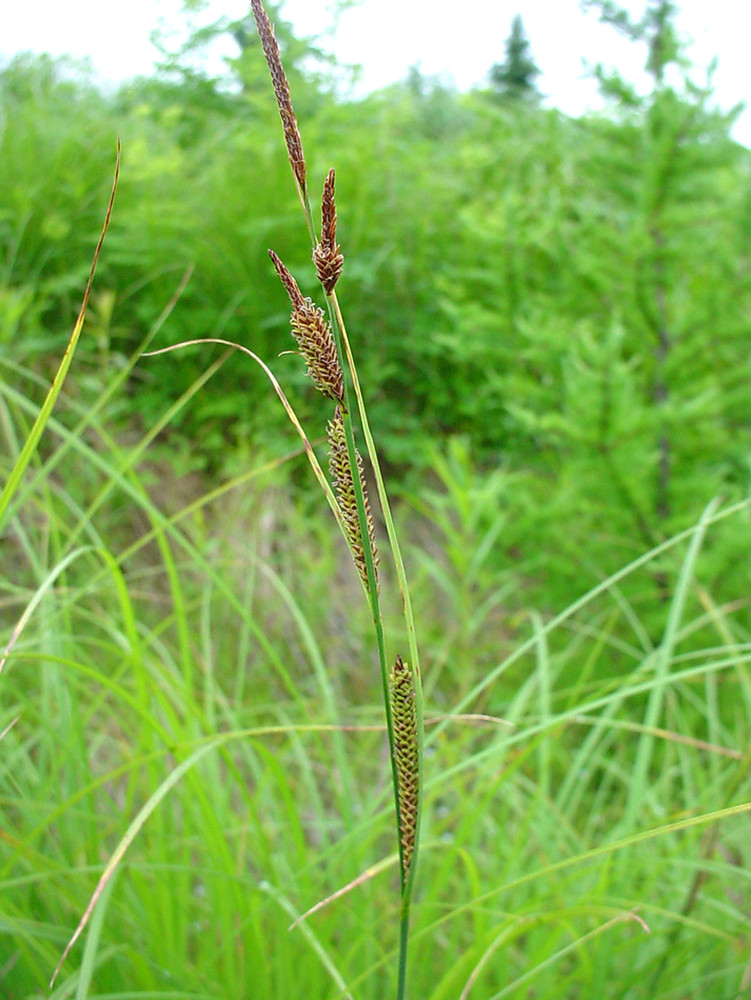Krause'S Sedge
(Carex turfosa)

Description
Culms to 15(-35) cm. Leaf blades flat or folded, 2-8 cm - 1-2 mm. Terminal spike gynecandrous, 7-10 mm, 1.3-1.5 mm wide in the staminate portion, level with or overtopped by some lateral spikes. Lateral spikes 4-10, 10-20-flowered, 6-10 - 2-3 mm, the proximal usually drooping. Pistillate scales brown with paler margins, often with paler midvein, obovate to obovate-circular, 1.6-2.1 - 1.2-1.6 mm, apex obtuse, mucronate. Staminate scales brown with paler margins, oblong-ovate 2-2.8 - 1-1.2 mm, apex obtuse. Perigynia veinless, except for 2 marginal veins, lanceolate to ovate-lanceolate, 1.5-3.3 - 0.7-1 mm; beak 0.3-0.7 mm, margins entire or serrulate. Achenes obovoid, 1.1-1.4 - 0.6-0.9 mm. 2n = 36. Fruiting summer. Dry to moist, calcareous tundra, shores, meadows; 0-500 m; Greenland; N.W.T., Que., Yukon; Alaska; n Eurasia. Records of Carex krausei from the Rocky Mountains are probably referable to C. capillaris, which may rarely have a gynecandrous terminal spike. Typical plants from the western part of the range have perigynia 2.2-3.3 mm with a smooth beak. Plants from the east, which have been recognized as Carex karusei subsp. porsildiana (Polunin) -. L-ve & D. L-ve, have perigynia 1.3-1.8 mm and, sometimes, a serrulate beak. Plants from the east and west coasts of Greenland, which are more robust than typical Carex krausei and usually have a serrulate perigynium beak, have been described as C. boecheriana -. L-ve, D. L-ve, & Raymond [C. capillaris subsp. robustior (Drejer ex Lange) B-cher. The chromosome number 2n = 56 has been recorded for these plants (-. L-ve et al. 1957).
Taxonomic tree:







